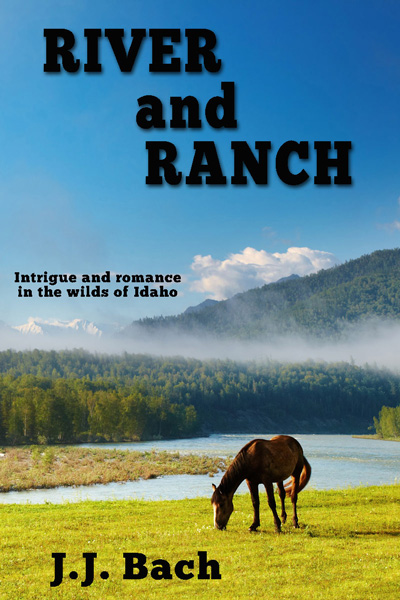Ghost towns are quirky things. Garnet, Montana is the ghost town I most remember. It's in the middle of nowhere as most ghost towns tend to be. Why there? and why not any more? In River and Ranch, the ghost town of Leesburg, out behind Salmon a few miles, pops up in a chapter.
For me, I have come to realize that part of the answer to location and longevity is recognizing that things have not always been the same. Garnet, for example, is accessed via a gravel Forest Service road. You wind around, go up a few really steep hills, around a few corners and there's Garnet. It takes about an hour to get there from Missoula going up the Blackfoot river valley, as I recall. It used to be much longer than that to get there, and Missoula was not always the nearest town.
Why is Garnet way up there in the middle of nowhere? Why not down in the valley by the road? That's an assumption on my part that many people make. We assume the road has always been there and we follow on with the assumption that the road has always been the easiest way to get there. A hundred or more years ago, those assumptions were not always the case. One important answer is building a town to keep the workers close to the stamp mill or mine. Remember, back when ghost towns were live towns, most of the time commuting meant walking to work.
The landscape of the 1880s is not the current landscape. Bridges, rest stops, hotels, and gas stations have really conditioned us to expect things a certain way when we travel. Also, travel is no longer viewed as an adventure or life threatening. On a wagon trip you checked your horses or oxen in the middle of the night. You carried rifles for your own protection, as well as for protecting your critical horses or oxen from wolves, etc. You carried ALL of your own food, or you shot it and picked it, as it presented itself. Also worth noting, there were no faucets for clean drinking water, not were there toilets. Toilet paper may not have been available. Speaking of which, here's an interesting link on the history of toilet paper, for today's digression.
Today when we take a trip, we generally return back to where we started. It may lack the excitement of going to the spot, but we do go back home most of the time. A long trip in a wagon to some far away spot, also meant an equally long trip in the wagon if you wanted to go back. People typically did not travel for work or pleasure. Wagons were generally one way vehicles used to start a new life.
Today's ghost towns are yesterday's destinations. Many arrived after arduous, life threatening journeys, in which there were no bridges, or rest stops, or restaurants to get food as you wanted. Their desire was to stay and start a new life. For some that worked, for most not so much. The places that turned out, have names. Those places that did not, like Garnet, now have books written about them with "ghost" in the title.

I've always found ghost towns so wonderfully creepy. Makes me want to write a story about them.
ReplyDeleteGood luck with the 2015 A to Z Challenge!
A to Z Co-Host S. L. Hennessy
http://pensuasion.blogspot.com